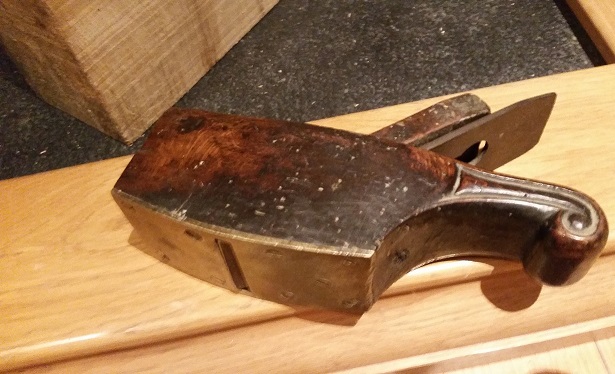G S Haydon
Established Member
- Joined
- 24 Apr 2013
- Messages
- 1,667
- Reaction score
- 223
Reading Custard's thoughts on how using a cap iron effectively on a compass plane could be helpful I was reminded of a wooden compass plane we have.
The plane seems pretty original but sadly to fragile to use. The plane iron in nice but quite new and that seems supported by the fact the cap iron screw slot has been fiddled with. However it looks to of always been a double iron plane.
There are no makers marks that I can see. Possibly it was craftsman made but the detailing is very sharp, so much so that it seems to be suggestive of a professionally made tool.
What I found interesting was that the wear in the mouth was vertical. In my attempt to make a Jack Plane I followed an example with an undercut wear that I found tricky to do. Seeing this plane make me think a vertical wear would be easier to work with.
Anyway, just thought you'd like a look based on recent discussions.




The plane seems pretty original but sadly to fragile to use. The plane iron in nice but quite new and that seems supported by the fact the cap iron screw slot has been fiddled with. However it looks to of always been a double iron plane.
There are no makers marks that I can see. Possibly it was craftsman made but the detailing is very sharp, so much so that it seems to be suggestive of a professionally made tool.
What I found interesting was that the wear in the mouth was vertical. In my attempt to make a Jack Plane I followed an example with an undercut wear that I found tricky to do. Seeing this plane make me think a vertical wear would be easier to work with.
Anyway, just thought you'd like a look based on recent discussions.








































